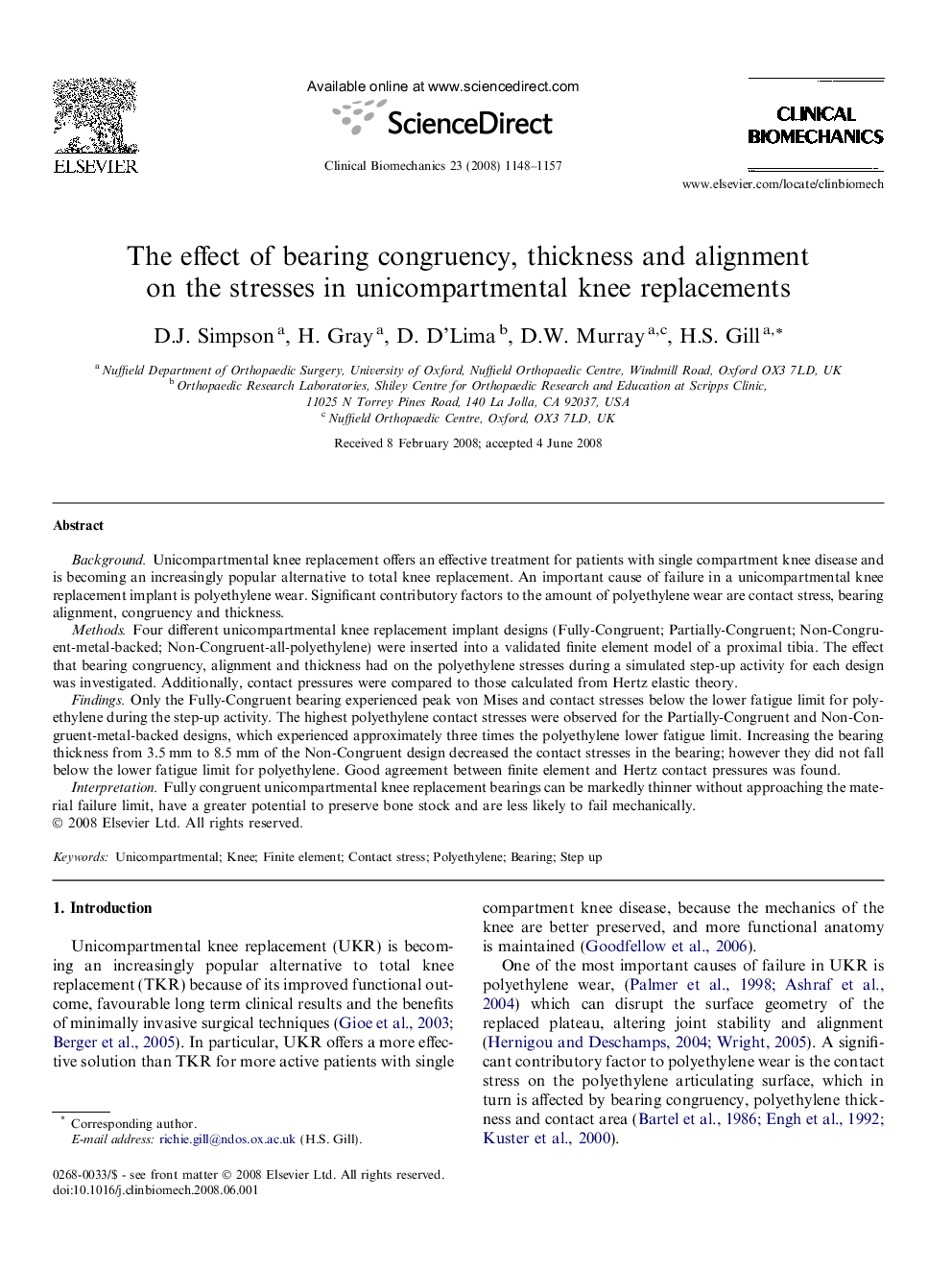| Article ID | Journal | Published Year | Pages | File Type |
|---|---|---|---|---|
| 4051165 | Clinical Biomechanics | 2008 | 10 Pages |
BackgroundUnicompartmental knee replacement offers an effective treatment for patients with single compartment knee disease and is becoming an increasingly popular alternative to total knee replacement. An important cause of failure in a unicompartmental knee replacement implant is polyethylene wear. Significant contributory factors to the amount of polyethylene wear are contact stress, bearing alignment, congruency and thickness.MethodsFour different unicompartmental knee replacement implant designs (Fully-Congruent; Partially-Congruent; Non-Congruent-metal-backed; Non-Congruent-all-polyethylene) were inserted into a validated finite element model of a proximal tibia. The effect that bearing congruency, alignment and thickness had on the polyethylene stresses during a simulated step-up activity for each design was investigated. Additionally, contact pressures were compared to those calculated from Hertz elastic theory.FindingsOnly the Fully-Congruent bearing experienced peak von Mises and contact stresses below the lower fatigue limit for polyethylene during the step-up activity. The highest polyethylene contact stresses were observed for the Partially-Congruent and Non-Congruent-metal-backed designs, which experienced approximately three times the polyethylene lower fatigue limit. Increasing the bearing thickness from 3.5 mm to 8.5 mm of the Non-Congruent design decreased the contact stresses in the bearing; however they did not fall below the lower fatigue limit for polyethylene. Good agreement between finite element and Hertz contact pressures was found.InterpretationFully congruent unicompartmental knee replacement bearings can be markedly thinner without approaching the material failure limit, have a greater potential to preserve bone stock and are less likely to fail mechanically.
